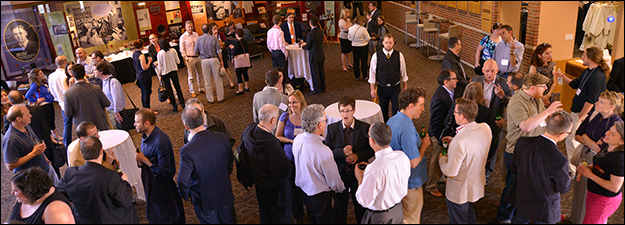Gender and Materiality in the Middle Ages
Sponsoring Organization(s)
Society for Medieval Feminist Scholarship (SMFS)
Organizer Name
Angela R. Bennett Segler
Organizer Affiliation
New York Univ.
Presider Name
Erin Labbie
Presider Affiliation
Bowling Green State Univ.
Paper Title 1
The Disabled Womb: Parturition and Its Parts
Presenter 1 Name
Samantha Katz Seal
Presenter 1 Affiliation
Weber State Univ.
Paper Title 2
Bird Bodies and Performed Gender in the The Owl and the Nightingale
Presenter 2 Name
Wendy A. Matlock
Presenter 2 Affiliation
Kansas State Univ.
Paper Title 3
The Forms of Hector's Body in Lydgate's Troy Book
Presenter 3 Name
Danielle Netzer
Presenter 3 Affiliation
Pennsylvania State Univ.
Start Date
16-5-2015 10:00 AM
Session Location
Fetzer 2016
Description
A number of different scholarly organizations have come together for the 50th Medieval Congress to pose questions about Materiality in the Middle Ages. While each panel represents a different issue and/or approach, at the core of these many inquiries is the question, "what about the MATTER of the Middle Ages?" The Society for Medieval Feminist Scholarship hopes to add a specific vein to this inter-organizational effort to interrogate medieval materiality from as many different angles and using as many different methods as possible. This panel at the 2015 Medieval Congress will actually be a follow-up session to one at MLA 2015 in January, in which several scholars will be taking up the topic of "Gender and Medieval Materialisms."
This panel, seeks papers that investigate the relationship between gendered bodies, medieval material culture and practices, and the expression of this practice in material-discursive texts. Our aim is not to simply continue an established conversation about the materiality of medieval culture and gender, but to take the field’s traditional work on materiality and corporeality and extend it through the framework of contemporary feminist materialism scholarship.
As Stacy Alaimo and Susan Hekman point out in their introduction to Material Feminisims, feminist theory in the late twentieth century, that linked into the “linguistic turn,” tended to “distance [it]self as much as possible from the tainted realm of materiality by taking refuge within culture, discourse, and language” (1) and even when feminist scholarship did focus on the body, it produced what Alaimo and Hekman call a “tremendous outpouring of scholarship on ‘the body’” that really amounted to scholarship analyzing the “discourses about the body” (3) rather than material bodies themselves. The “body” of late twentieth-century feminist scholarship tended to be the discursively produced, socially constructed body that emerged at the nexus of social, cultural, and textual forces to render “the body” legible as such a thing within a human network of distributive agency and performative action. The material here, was still, somehow, the realm of either inescapable or unconsctructed, almost a priori, reality while the cultural and the discursive covered that background (material) surface with a multiplicity of overlapping significations and inscriptions.
We ask for work on medieval materialisms that seeks not to push against the linguistic turn, but to recover the significance of matter itself that has, throughout much of Humanist history, been flattened into nothing more than a surface onto which the human can inscribe meaning, significance, and value. This idea that matter is merely the passive stuff to be molded into human forms echoes the common gendered binary of active/passive mapped onto male/female.
Dorothy Kim
Gender and Materiality in the Middle Ages
Fetzer 2016
A number of different scholarly organizations have come together for the 50th Medieval Congress to pose questions about Materiality in the Middle Ages. While each panel represents a different issue and/or approach, at the core of these many inquiries is the question, "what about the MATTER of the Middle Ages?" The Society for Medieval Feminist Scholarship hopes to add a specific vein to this inter-organizational effort to interrogate medieval materiality from as many different angles and using as many different methods as possible. This panel at the 2015 Medieval Congress will actually be a follow-up session to one at MLA 2015 in January, in which several scholars will be taking up the topic of "Gender and Medieval Materialisms."
This panel, seeks papers that investigate the relationship between gendered bodies, medieval material culture and practices, and the expression of this practice in material-discursive texts. Our aim is not to simply continue an established conversation about the materiality of medieval culture and gender, but to take the field’s traditional work on materiality and corporeality and extend it through the framework of contemporary feminist materialism scholarship.
As Stacy Alaimo and Susan Hekman point out in their introduction to Material Feminisims, feminist theory in the late twentieth century, that linked into the “linguistic turn,” tended to “distance [it]self as much as possible from the tainted realm of materiality by taking refuge within culture, discourse, and language” (1) and even when feminist scholarship did focus on the body, it produced what Alaimo and Hekman call a “tremendous outpouring of scholarship on ‘the body’” that really amounted to scholarship analyzing the “discourses about the body” (3) rather than material bodies themselves. The “body” of late twentieth-century feminist scholarship tended to be the discursively produced, socially constructed body that emerged at the nexus of social, cultural, and textual forces to render “the body” legible as such a thing within a human network of distributive agency and performative action. The material here, was still, somehow, the realm of either inescapable or unconsctructed, almost a priori, reality while the cultural and the discursive covered that background (material) surface with a multiplicity of overlapping significations and inscriptions.
We ask for work on medieval materialisms that seeks not to push against the linguistic turn, but to recover the significance of matter itself that has, throughout much of Humanist history, been flattened into nothing more than a surface onto which the human can inscribe meaning, significance, and value. This idea that matter is merely the passive stuff to be molded into human forms echoes the common gendered binary of active/passive mapped onto male/female.
Dorothy Kim


